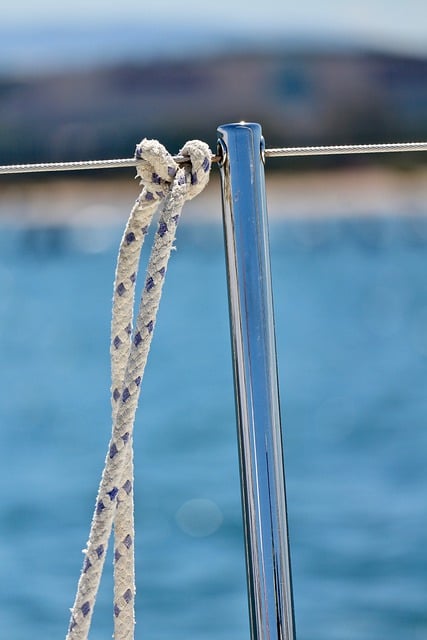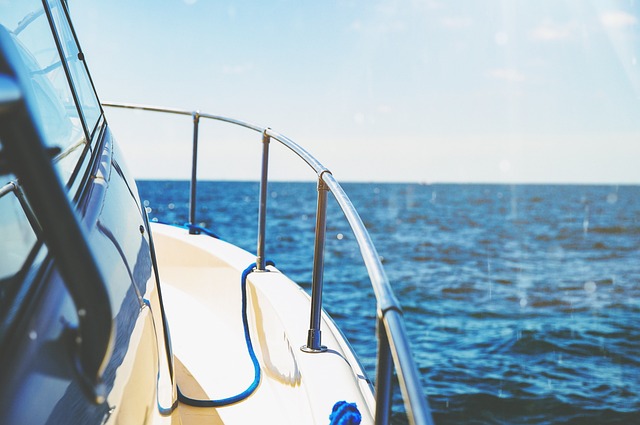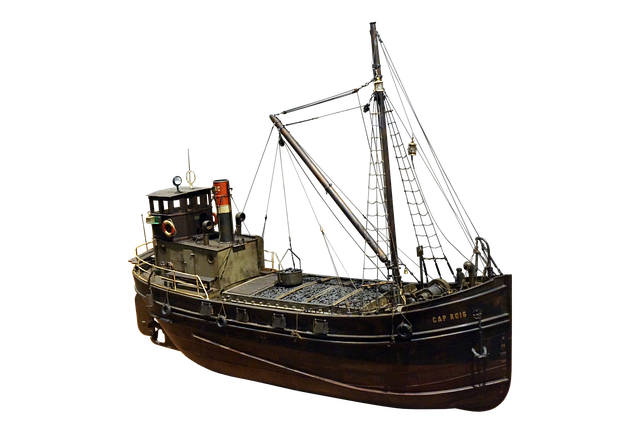Marine batteries play a pivotal role in the functionality and safety of vessels at sea, withstanding harsh conditions like high salt content, humidity, and engine vibrations. There are two primary types: lead-acid and AGM (Absorbed Glass Mat) batteries. Lead-acid batteries excel in starting power and high ampere output, crucial for engine cranking. In contrast, AGM batteries offer superior deep-cycle performance for both starting and trolling with their non-spillable design, making them safer and more suitable for boats. When selecting a marine battery, one must consider the unique characteristics and performance needs to ensure optimal battery life and effectively resolve any charge-related issues.
Proper maintenance is vital for marine batteries' longevity and reliability. Users should safeguard against extreme temperatures that can impact charge retention and implement protective measures when the battery is not in use. Correct charging, free from sulfation, and regular monitoring for parasitic drains are essential. For troubleshooting, verify the accuracy of the battery charge indicator, calibrate if necessary, inspect connections for corrosion or looseness, and assess the charging system's functionality. Additionally, monitor voltage levels, runtime between charges, temperature, and ventilation to diagnose and address charge loss issues. Advanced diagnostic tools are essential for maintaining marine batteries, and it's imperative to replace any faulty chargers or batteries that are beyond repair. Regular upkeep, including maintaining terminals and ensuring secure connections, extends battery life, while signs of persistent low voltage, failure to hold a charge, or visible swelling indicate the need for replacement. Always aim for a full charge lasting at least 24 to 36 hours based on usage, and perform routine checks to catch degradation early, ensuring your marine equipment is ready for your seafaring adventures.
Navigating the high seas requires reliable power, and your marine battery is the cornerstone of your vessel’s electrical systems. Whether you’re an angler casting lines or a captain charting a course across the horizon, understanding and maintaining your marine battery is crucial for uninterrupted voyages. This article delves into the nuances of marine batteries, from their varied roles to common charge issues that can disrupt your journey. With actionable steps on troubleshooting, maintenance, and advanced diagnostics, you’ll learn how to keep your marine battery performing at its peak. Regular inspections and testing are key to longevity, ensuring your power source is ready when you set sail. Dive into the intricacies of marine battery health to guarantee your next adventure on the water is powered by knowledge and preparedness.
- Understanding Marine Battery Types and Their Roles
- Common Causes of Marine Battery Charge Issues
- Step-by-Step Troubleshooting for Marine Battery Charge Problems
- How to Properly Maintain Your Marine Battery for Optimal Performance
- The Importance of Regular Inspections and Testing of Marine Batteries
- Advanced Tips for Diagnosing and Resolving Persistent Marine Battery Charge Loss
- When to Replace Your Marine Battery: Signs and Considerations
Understanding Marine Battery Types and Their Roles

When addressing battery charge issues on maritime vessels, it’s crucial to have a firm grasp of the different types of marine batteries and their distinct roles. Marine batteries are designed to withstand the harsh conditions found at sea, including high salt content, humidity, and frequent vibrations caused by engine operations. These conditions necessitate specialized construction and materials for durability and performance.
There are primarily two main types of marine batteries: lead-acid and AGM (Absorbed Glass Mat) batteries. Lead-acid batteries have been the traditional choice for powering boat systems, offering reliable service in starting (cranking) applications. They are recognized for their robust construction and high ampere output, which is essential for quickly cranking the engine to life. On the other hand, AGM batteries represent a modern advancement in battery technology, providing superior deep-cycle performance for both starting and trolling applications. The non-spillable design of AGM batteries makes them an ideal choice for use on boats, as they are less likely to leak or spill, even when installed at an angle. This feature is particularly beneficial in marine environments where safety and operational efficiency are paramount. Understanding the distinct roles and requirements of each type ensures that boat owners can make informed decisions when selecting the appropriate battery for their vessel’s needs, ultimately resolving any charge-related issues more effectively.
Common Causes of Marine Battery Charge Issues

Marine batteries face unique challenges due to their environment, and understanding the common causes of charge issues is crucial for maintaining their performance. One prevalent cause of battery charge problems in marine settings is exposure to extreme temperatures. Both high heat and freezing conditions can degrade a battery’s ability to hold a charge. It’s important for users to protect their marine batteries from these extremes by using appropriate insulation or storage solutions when not in use.
Another significant factor affecting marine battery charge is the type of charging system employed. Incorrect charging, whether too fast or too slow, can lead to sulfation, a condition where sulfur crystals form on the battery plates, impairing its ability to accept and hold a charge. Regular maintenance, including periodic charging at appropriate amperage levels, is essential to prevent such issues. Additionally, ensuring that the battery is connected correctly to the charging system and that there are no parasitic drains can help maintain optimal charge levels. Understanding these common causes allows for proactive measures to be taken, thereby extending the lifespan of marine batteries and ensuring their reliability on the water.
Step-by-Step Troubleshooting for Marine Battery Charge Problems

When encountering battery charge issues on your vessel, a systematic approach is crucial for effective troubleshooting. Begin by examining the battery charge indicator on your marine battery to determine if the charge level is accurate. If the gauge is displaying an inaccurate reading, calibration may be necessary. To recalibrate, follow the manufacturer’s guidelines, which often involve charging the battery to full capacity and then allowing it to discharge to a specific low voltage before recharging again. This process helps ensure that the charge level displayed corresponds with the actual state of charge.
Should the charge indicator be functioning correctly but you still face issues, assess the battery’s connections and cables. Corroded terminals or loose connections can impair power flow and lead to inconsistent charging. Use a multimeter to measure the voltage at the battery terminals; it should match the voltage specified by the manufacturer when fully charged. If the readings are off, inspect all cables and clamps for signs of wear or corrosion. Clean any corroded terminals with a wire brush and apply a coating of dielectric grease to prevent future corrosion. Additionally, check the alternator and charging system to confirm that they are functioning correctly. A faulty alternator will not maintain the battery’s charge, necessitating its replacement or repair. By following these steps methodically, you can resolve most marine battery charge problems and ensure your vessel’s power systems operate reliably.
How to Properly Maintain Your Marine Battery for Optimal Performance

To ensure your marine battery delivers peak performance, regular maintenance is key. A well-maintained battery can significantly extend its lifespan and reliability, which is crucial for unexpected situations out on the water. Firstly, it’s important to regularly check the water levels in flooded lead-acid marine batteries. This involves periodically topping off the distilled water to keep the electrolyte solution at the optimal level, as this directly impacts the battery’s charging efficiency. Always use distilled water and avoid overfilling to prevent spills that could harm the environment or your boat.
Secondly, cleaning the terminals and cable connections is another essential aspect of maintenance. Corrosion on terminals can lead to poor connections, which can impede current flow and reduce battery efficiency. Use a mixture of baking soda and water to gently clean the terminals, and ensure they are securely tightened but not overtightened, as this can damage the connections. Additionally, storing your boat and battery in a cool, dry place away from direct sunlight will protect against extreme temperatures that can drain the battery’s charge or cause irreversible damage. Regular charging practices that involve partial discharges followed by complete recharges under normal operating conditions are also beneficial for prolonging the battery’s lifecycle. By adhering to these maintenance practices, you can ensure your marine battery remains dependable, whether for short trips or long voyages.
The Importance of Regular Inspections and Testing of Marine Batteries

Advanced Tips for Diagnosing and Resolving Persistent Marine Battery Charge Loss

When confronted with persistent marine battery charge loss, it’s crucial to employ advanced diagnostic techniques to pinpoint the root cause of the issue. The first step is to monitor the battery’s performance over time, recording voltage levels and runtime between charges. This data can reveal patterns that indicate whether the problem lies in self-discharge rates, which can be elevated in marine environments due to high temperatures or poor ventilation, or if there are external factors at play such as parasitic loads draining power when the vessel is docked. Utilizing a hydrometer or digital multimeter to check the specific gravity of each cell in lead-acid batteries, or the state of charge for AGM and lithium-ion types, can provide insight into whether the battery’s health is compromised.
Once the diagnosis is underway, it’s essential to address any identified issues promptly. If the battery is overcharging due to a charger malfunctioning or set incorrectly, recalibrate or replace the charging system. Regular cleaning and maintenance of the battery terminals and connections can prevent corrosion, which often leads to poor conductivity and inefficient charging. Additionally, inspecting the battery for any signs of physical damage or ensuring it’s securely mounted to prevent movement that could cause internal damage is critical. For batteries that are beyond repair, consulting manufacturers for warranties or professional assistance in selecting a suitable replacement tailored to your vessel’s electrical load and conditions is advisable. Regular maintenance, such as keeping the battery compartment dry and well-ventilated, can further enhance its lifespan and performance, ensuring your marine adventures are uninterrupted by power issues.
When to Replace Your Marine Battery: Signs and Considerations

When encountering persistent battery charge issues with your marine battery, it’s crucial to determine whether a simple recharge will suffice or if it’s time for a replacement. A fully charged marine battery should ideally hold a charge for at least 24 to 36 hours, depending on the usage demand and the type of battery. However, as batteries age, their ability to store and deliver power diminishes. Here are some key signs that may indicate your marine battery requires replacement:
Consistent or frequent low voltage readings despite a full charge can be an early warning sign. If your marine battery is struggling to hold a charge for its intended duration, it’s likely degrading. Additionally, noticeable swelling or bulging in the battery case, indicative of overcharging or an internal short circuit, is a clear signal that the battery should be replaced without delay. Regular maintenance practices, such as keeping terminals clean and ensuring connections are secure, can help prolong the life of your marine battery. Yet, even with meticulous care, batteries will eventually reach the end of their serviceable life due to natural wear and tear. It’s advisable to inspect your marine battery periodically for any of these signs and consider replacing it if it’s over three years old or if its capacity has fallen significantly from when it was new. Proactive maintenance and timely replacement can ensure that your marine equipment operates reliably whenever you set sail.
In conclusion, maintaining the health and charge of your marine battery is a critical aspect of ensuring the longevity and reliability of your vessel’s electrical systems. By understanding the different types of marine batteries and their specific roles, you can better pinpoint and address common charge issues. The troubleshooting steps provided offer a clear path to resolving most charging problems, while maintaining your battery through proper care and regular inspections will prevent many potential malfunctions. Advanced tips for diagnosing persistent issues are vital for those facing ongoing charge loss. Ultimately, knowing when to replace your marine battery with new models is essential to safeguard your investment in both your vessel and its power source. With these strategies at hand, you can navigate the waters with confidence, knowing that your marine battery will deliver consistent performance whenever you set sail.
